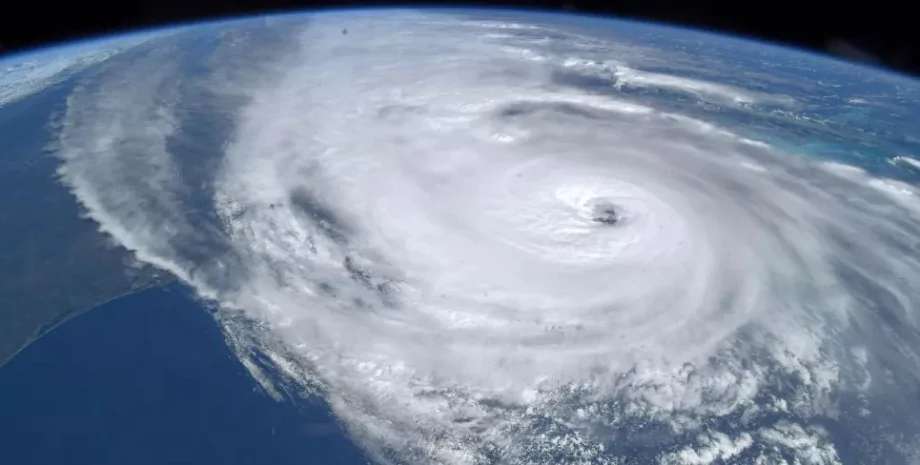Scientists predicted extremely strong hurricanes of the sixth category
- February 6, 2024
- 0
A team from the E. Lawrence National Laboratory in Berkeley (USA) has made an alarming call for the creation of a sixth category to indicate the strength of
A team from the E. Lawrence National Laboratory in Berkeley (USA) has made an alarming call for the creation of a sixth category to indicate the strength of

A team from the E. Lawrence National Laboratory in Berkeley (USA) has made an alarming call for the creation of a sixth category to indicate the strength of storms sweeping the Earth. The limit threshold of 250 kilometers per hour of wind speed adopted for the fifth category is no longer sufficient.
Recently, many scientific groups are increasingly stating that the climate crisis on our planet is intensifying. Researchers are referring to last year’s confirmation that the Earth was going through what they said were incredible heat waves, wildfires and drought. According to some weather forecasters, the red color that shows the temperature change is not enough. Many people also think that hurricanes are also intensifying and the current scale is not enough to mark them.
For more than 50 years, the National Hurricane Center (Florida, USA) has used the Windscale system, developed in the early 1970s by engineer Herbert Saffir and meteorologist Robert Simpson, to convey the risk of property damage. The scale indicated a hurricane on a scale from category one (wind speed 119 to 153 kilometers per hour) to category five (wind speed 254 kilometers per hour and more).
However, according to a study conducted by climatologists from the E. Lawrence National Laboratory in Berkeley and whose results were published in the journal Proceedings of the National Academy of SciencesEven today there are much more severe storms that require a new sixth category. This level will include hurricanes with wind speeds of 309 kilometers per hour or more. This can be confirmed by tropical hurricane “Patricia”, which touched the Pacific coast of Mexico in 2015 – its speed reached 345 kilometers per hour. Below are four more storms that fit the hypothetical sixth category.

According to scientists, this is due to the warming of the ocean, which provides additional energy to cyclones. This is also facilitated by an unprecedentedly hot and humid atmosphere. All of this makes the Saffir-Simpson scale obsolete and even potentially dangerous for calculation; because inaccurate information can cause inadequate preparation by regional officials facing a disaster.
“The tropical cyclone risk reporting system requires reform to better inform the public about inland flooding and storm surges, for which wind-based scale has only an indirect relationship. Adding a sixth category to the Saffir-Simpson scale would raise awareness of the dangers of increased risk of severe hurricanes due to global warming,” said study co-author James Kossin.
This team also modeled how a warming climate would affect the strengthening of hurricanes. Models showed that with global warming two degrees Celsius above pre-industrial levels, the risk of Category 6 storms increases by 50% near the Philippines and doubles in the Gulf of Mexico. The highest risk of these storms is in southeastern Mexico.
It is worth noting that tropical cyclone “Patricia” reached a speed of 345 kilometers per hour only over the ocean, and the wind speed in it at the time of landfall did not exceed 240 kilometers per hour. This very much fits the Saffir-Simpson scale and no new categories are added. Some other categories of hurricanes that make landfall while maintaining wind speeds beyond this scale are unknown.
Considering that offshore wind speeds (including hurricane-force winds) are always higher on average than overland or coastal areas, it is clear that the Saffir-Simpson scale, created in an era before satellite observations, makes this possible. To accurately determine the speed of hurricanes over the sea. It was not intended to determine the strength of hurricanes when they do not threaten human settlements and infrastructure.
Another problem with the approach of the authors of the new scientific study is the fact that they assume an increase in the frequency and intensity of tropical cyclones, although, according to observational data, both the frequency and energy of tropical cyclones are actually decreasing. throughout the entire observation period. Naked Science has previously written about why scientists associate the decline in the frequency and strength of hurricanes with global warming and why there is a misconception that climate change may increase the number of hurricanes.
Source: Port Altele
As an experienced journalist and author, Mary has been reporting on the latest news and trends for over 5 years. With a passion for uncovering the stories behind the headlines, Mary has earned a reputation as a trusted voice in the world of journalism. Her writing style is insightful, engaging and thought-provoking, as she takes a deep dive into the most pressing issues of our time.